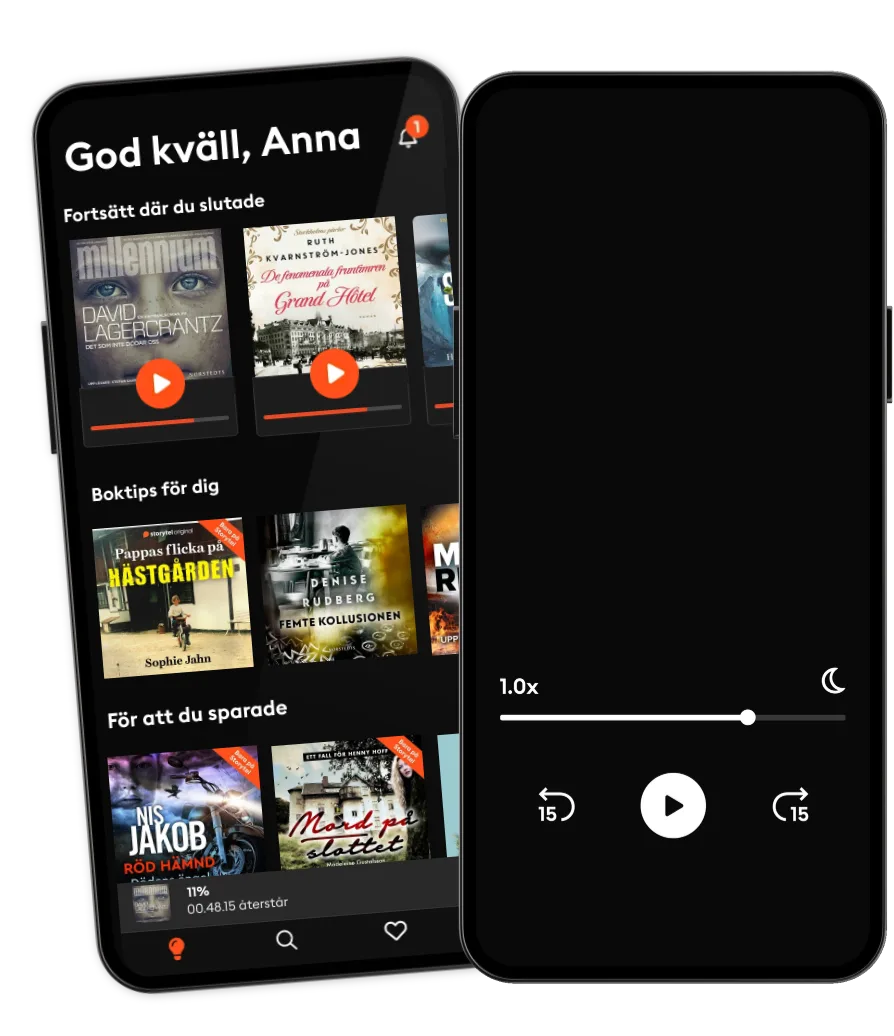Lyssna när som helst, var som helst
Kliv in i en oändlig värld av stories
- 1 miljon stories
- Hundratals nya stories varje vecka
- Få tillgång till exklusivt innehåll
- Avsluta när du vill

Edgar Degas
- Språk
- Engelska
- Format
- Kategori
Fakta
Degas was closest to Renoir in the impressionist’s circle, for both favoured the animated Parisian life of their day as a motif in their paintings. Degas did not attend Gleyre’s studio; most likely he first met the future impressionists at the Café Guerbois. He started his apprenticeship in 1853 at the studio of Louis-Ernest Barrias and, beginning in 1854, studied under Louis Lamothe, who revered Ingres above all others, and transmitted his adoration for this master to Edgar Degas. Starting in 1854 Degas travelled frequently to Italy: first to Naples, where he made the acquaintance of his numerous cousins, and then to Rome and Florence, where he copied tirelessly from the Old Masters. His drawings and sketches already revealed very clear preferences: Raphael, Leonardo da Vinci, Michelangelo, and Mantegna, but also Benozzo Gozzoli, Ghirlandaio, Titian, Fra Angelico, Uccello, and Botticelli. During the 1860s and 1870s he became a painter of racecourses, horses and jockeys. His fabulous painter’s memory retained the particularities of movement of horses wherever he saw them. After his first rather complex compositions depicting racecourses, Degas learned the art of translating the nobility and elegance of horses, their nervous movements, and the formal beauty of their musculature. Around the middle of the 1860s Degas made yet another discovery. In 1866 he painted his first composition with ballet as a subject, Mademoiselle Fiocre dans le ballet de la Source (Mademoiselle Fiocre in the Ballet ‘The Spring’) (New York, Brooklyn Museum). Degas had always been a devotee of the theatre, but from now on it would become more and more the focus of his art. Degas’ first painting devoted solely to the ballet was Le Foyer de la danse à l’Opéra de la rue Le Peletier (The Dancing Anteroom at the Opera on Rue Le Peletier) (Paris, Musée d’Orsay). In a carefully constructed composition, with groups of figures balancing one another to the left and the right, each ballet dancer is involved in her own activity, each one is moving in a separate manner from the others. Extended observation and an immense number of sketches were essential to executing such a task. This is why Degas moved from the theatre on to the rehearsal halls, where the dancers practised and took their lessons. This was how Degas arrived at the second sphere of that immediate, everyday life that was to interest him. The ballet would remain his passion until the end of his days.
© 2024 Parkstone International (E-bok): 9781783102860
Utgivningsdatum
E-bok: 5 juni 2024
Taggar
Andra gillade också ...
- Degas Nathalia Brodskaya
- Pissarro Nathalia Brodskaya
- The Fauves Nathalia Brodskaya
- Impressionism Nathalia Brodskaïa
- Post-Impressionism Nathalia Brodskaïa
- Cassatt and artworks Nathalia Brodskaïa
- Naïve Art 120 illustrations Natalia Brodskaya
- Constable Barry Venning
- Paul Signac and artworks Paul Signac
- Leonardo Da Vinci - Artist, Thinker, and Man of Science Eugène Müntz
- Edgar Degas and artworks Jp. A. Calosse
- Gustave Caillebotte (1848-1894) Nathalia Brodskaïa
- Michelangelo Eugène Müntz
- The world of The Viennese Secession unveiled Victoria Charles
- Klimt Jane Rogoyska
- Constable Victoria Charles
- Women Artists in Expressionism: From Empire to Emancipation Shulamith Behr
- Hieronymus Bosch Virginia Pitts Rembert
- Léon Bakst. The art of theatre and dance Elisabeth Ingles
- Hans Holbein the younger Jeanette Zwingenberger
- Edward Burne-Jones: Art and intrigue Patrick Bade
- Malevich Gerry Souter
- The Brueghels Victoria Charles
- Raphael - Volume 2 Eugène Müntz
- Robert Delaunay Vicky Carl
- Mondrian Jp. A. Calosse
- Ernst Ludwig Kirchner and artworks Klaus Carl
- Piet Mondrian and artworks Stéphanie Angoh
- Arcimboldo and artworks Liana De Girolami Cheney
- The ultimate book on Rembrandt Émile Michel
- Pierre-Auguste Renoir and artworks Natalia Brodskaya
- Ivan Shishkin Victoria Charles
- Art of India Vincent Arthur Smith
- Franz Marc and artworks Klaus H. Carl
- James McNeill Whistler 1834-1863 Patrick Chaleyssin
- The mystique of Opium Donald Wigal
- Decorative Art Albert Jaquemart
- Paul Cézanne and artworks Natalia Brodskaya
- Van Dyck and artworks Natalia Gritsai
- Rembrandt (1606-1669) Émile Michel
- 30 Millennia of Sculpture Patrick Bade
- The ultimate book on Claude Monet Nina Kalitina
- Exploring the Essence of Cubism Guillaume Apollinaire
- James McNeill Whistler Patrick Chaleyssin
- Piet Mondrian Virginia Pitts Rembert
- Cubism Guillaume Apollinaire
- Turner Stéphanie Angoh
- Kaninhålet Leffe Grimwalker
3.8
- Mellan samma väggar Jojo Moyes
3.9
- Boksamlaren Camilla Davidsson
4
- Inte ditt barn Nilla Kjellsdotter
4.1
- Väninnorna på Nordiska Kompaniet Ruth Kvarnström-Jones
4.1
- De fenomenala fruntimren på Grand Hôtel Ruth Kvarnström-Jones
4.5
- Ulven Johan Kant
3.9
- Hembiträdets hemlighet Freida McFadden
4.1
- Hembiträdet Freida McFadden
4.2
- Kiruna Killer Leffe Grimwalker
4.2
- Solglimt Aud Midtsund
4.2
- Post Mortem David Lagercrantz
3.8
- Tranorna flyger söderut Lisa Ridzén
4.6
- Sömngångaren Lars Kepler
4.2
- Ett evigt mörker Mikael Ressem
3.9
Därför kommer du älska Storytel:
1 miljon stories
Lyssna och läs offline
Exklusiva nyheter varje vecka
Kids Mode (barnsäker miljö)
Premium
Lyssna och läs ofta.
1 konto
100 timmar/månad
Exklusivt innehåll varje vecka
Avsluta när du vill
Obegränsad lyssning på podcasts
Unlimited
Lyssna och läs obegränsat.
1 konto
Lyssna obegränsat
Exklusivt innehåll varje vecka
Avsluta när du vill
Obegränsad lyssning på podcasts
Family
Dela stories med hela familjen.
2-6 konton
100 timmar/månad för varje konto
Exklusivt innehåll varje vecka
Avsluta när du vill
Obegränsad lyssning på podcasts
2 konton
239 kr /månadFlex
Lyssna och läs ibland – spara dina olyssnade timmar.
1 konto
20 timmar/månad
Spara upp till 100 olyssnade timmar
Exklusivt innehåll varje vecka
Avsluta när du vill
Obegränsad lyssning på podcasts
Svenska
Sverige